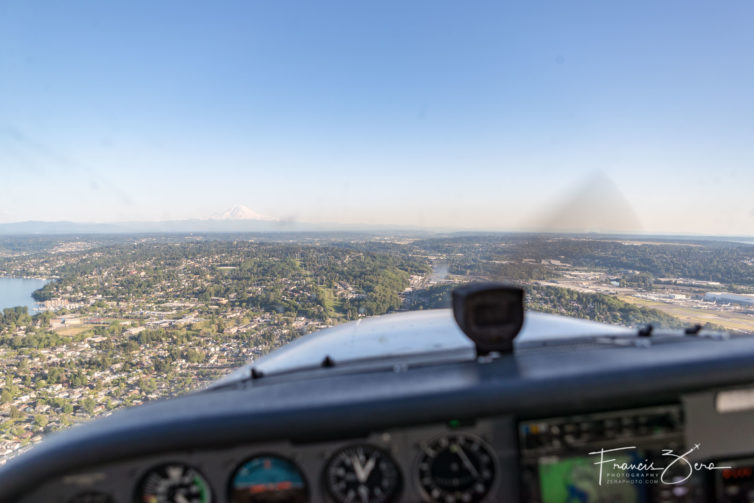
In the traffic pattern at Boeing Field. The view doesn’t suck – that’s Mount Rainier on the horizon, and the airfield is on the lower-right side of the image.
This is a continuation of my multi-part series on learning to fly. You can read the whole Fly With Francis series here.
After six weeks, which went past in a seeming eyeblink, I’ve completed ground school. Drinking from a fire hose is an appropriate analogy. Still, I passed all three written stage tests, and just passed the written comprehensive finals, which consisted of two separate tests over two class sessions. Next up will be scheduling and taking the proper FAA written exam before all this hard-earned info leaks out of my brain.
I’ve also been flying quite a lot with my CFI (aka my instructor) – two or three hours a week on average. I’m learning new skills like crazy, but am also burning through money like a Silicon Valley startup. In contrast with most of my stories, I don’t have very many photos to share for this series, not at least so far. Learning how to fly is hard, and if I’m on the controls the whole flight, there’s no time for taking photos. I’m considering finding a way to mount a GoPro either inside or outside the plane so there’s at least some video to share.
Anyway, we started doing pattern work a week or so ago; that means pretty much flying in the airport’s prescribed traffic pattern, doing a touch-and-go, then re-entering the pattern. Lather, rinse, repeat. At Boeing Field (BFI), you can get about six laps around the pattern into a one-hour lesson.
The first time we did this, it was utterly demoralizing. I’m flying a plane, which is amazing and fun, but landing is *hard*. Especially when dealing with BFI’s notoriously squirrelly crosswinds.
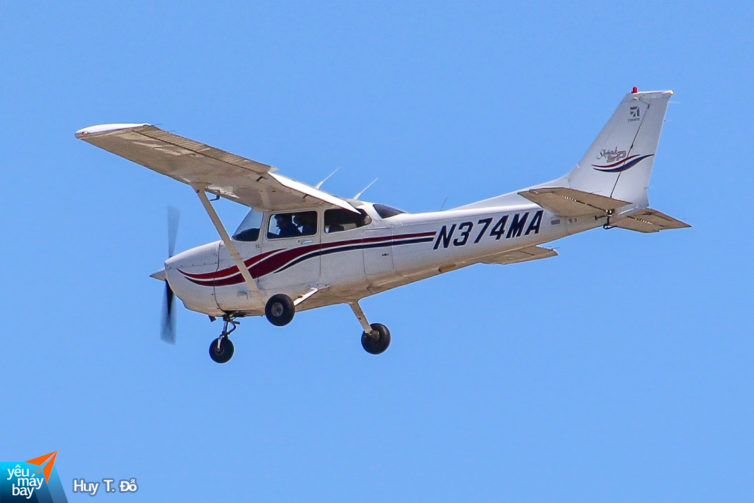
That’s us, coming in to land at BFI following my first training flight with Galvin Flying – Photo: Huy Do
This is a continuation of my multi-part series on learning to fly. You can read the introduction here.
As of now, I’ve completed the stage one and two ground-school exams. These exams are administered by the ground-school instructor at Galvin Flying and serve as checkpoints; they don’t count toward the FAA exam.
I’ve passed them both, which is encouraging (a passing grade is 70% – I did quite a bit better than that).
We’ve already covered basic aerodynamics, powerplants, flight instruments, airspace, airports, communications, and flight safety. We just wrapped up the comprehensive weather and FAA regulation sections; now it’s on to flight planning, which is where the math starts. We’ll learn to compute things like fuel consumption rates, time/speed/distance, endurance, airspeed, density altitude, and wind correction angles.
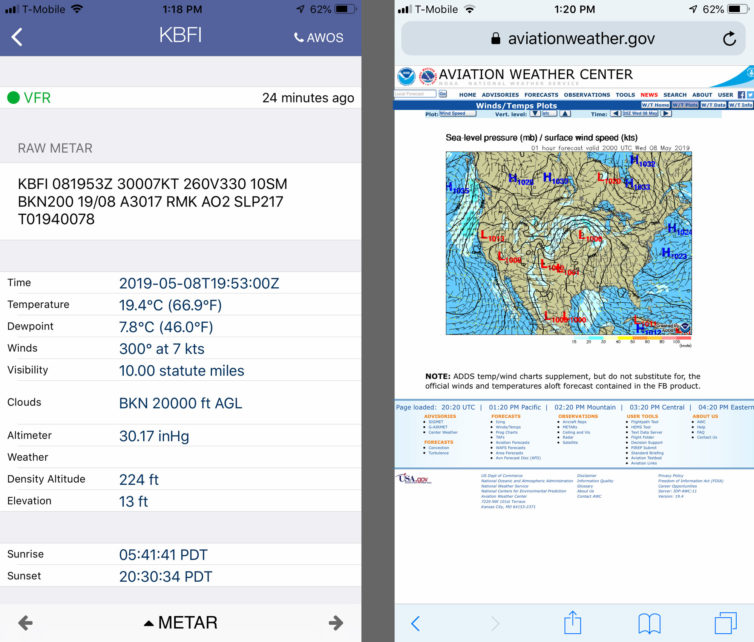
Believe it or not, this weather stuff is starting to make sense
Ground school wraps up on May 25th with a comprehensive knowledge test, which is basically a full-on practice version of the proper FAA exam.
Theoretically, if we’ve successfully completed the course, we’ll then be prepared to plunk down the roughly $165 to take the FAA written test; a grade of at least 70% is required to pass.
I’ve also started flight training. I didn’t mention before, but basically my butt is a bit too heavy for the Cessna 152, which is the aircraft I’d originally planned to train in, primarily for the $60/hour cost savings over the larger C172. Putting two 200 lb. adult males (my CFI isn’t a small guy, either) in a C152 means no cross-country flights, as the aircraft’s maximum payload limit leaves room for no more than 1/2 tank of fuel. I won’t lie, though, I do like the larger plane.
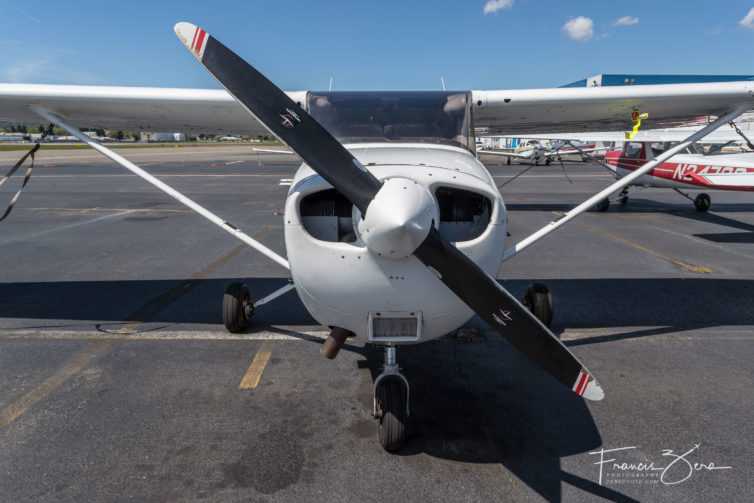
The business end of a Cessna 172, the type of plane I’ll be training in
Yep. I’m finally doing it.
After close to a decade of talking about taking flying lessons, and after a couple of false starts, I’ve plunked down my money and started ground school last month with Galvin Flying at King County International Airport, aka Boeing Field, aka BFI, in Seattle.
Flying is both a spendy and time-intensive process. I’ve taken a number of introductory flight lessons, and at one point I actually started flight training with a private instructor and self-guided ground school (that’s the experience that made me realize a formal program would be better for me). I’ve also ridden along with several friends and their instructors on their own training flights.
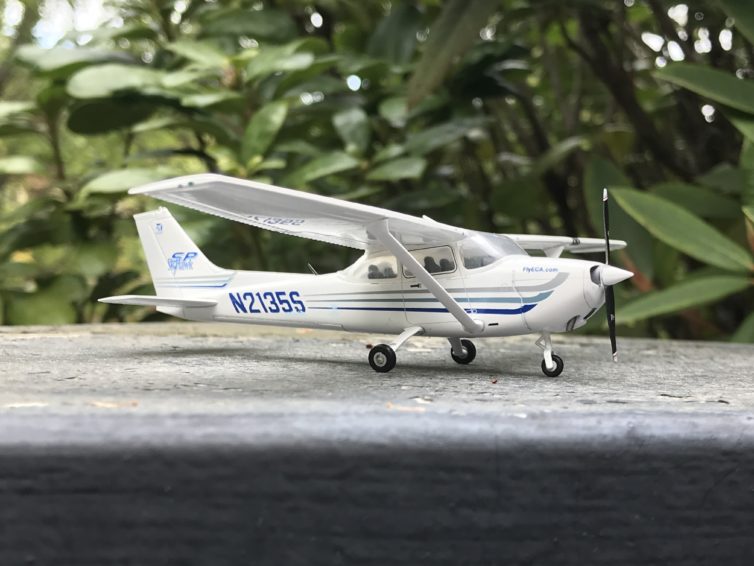
Of course I needed a model C172 to help with training
Anyway, here I am, about halfway through ground school. Now, as JL has already told you, formal ground school is optional, as there are many legit self-study options available that will prepare you for the FAA written exam. Key to any learning endeavor – especially one for folks for whom school of any kind is a couple of decades in the past – is knowing your learning style preferences.
From experience, I know that my most effective learning style is a combination of books and a human instructor, hence my choice of classroom-style ground school. Other folks might prefer videos, still others might choose a self-paced pre-packaged program; all those options are available.
Student pilot requirements get their own chapter in the FAR/AIM, which is the combined set of Federal Aviation Regulations (FAR) and the Aeronautical Information Manual (AIM). It’s the bible for flying in the U.S. I’m here to tell you that it definitely contains lots more rules and regulations than the real Bible.
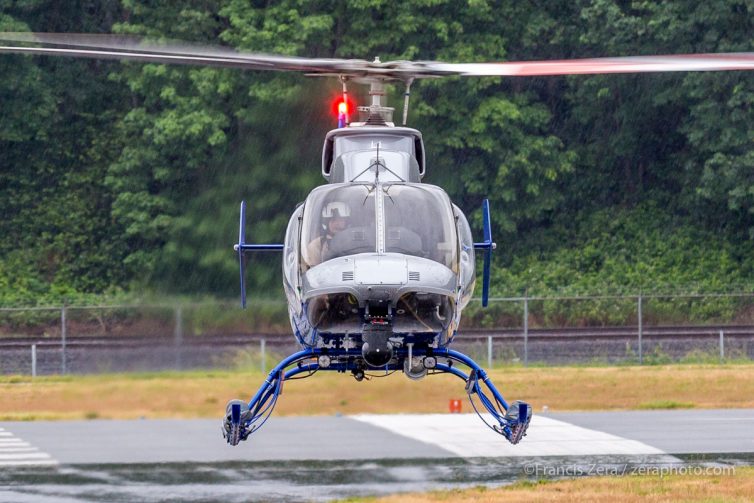
The DEA’s Bell 407 lands in the Seattle rain
The traveling American Heroes Air Show visited Seattle’s Museum of Flight on May 21 for the first time since 2012. The helicopters-only show, which was held in Austin earlier in May and is scheduled for Los Angeles in June, does not feature traveling aircraft. Rather, it gathers local rotorcraft from military bases, police, fire, EMS services, federal agencies, and private firms for what amounts to a public one-day fly-in. Agencies are encouraged to set up informational/recruiting tables at the events, which are free and open to the public.
The 2012 Seattle event featured several military craft, including a Chinook transport and an Apache attack helicopter. The military aircraft were withdrawn from this year’s event not long before the show, leaving just a handful of helicopters on display: the DEA’s Bell 407, a Schweitzer two-seater, a Robinson R44 on inflatable floats, an R22, and Airlift Northwest’s Agustawestland A-109-E.
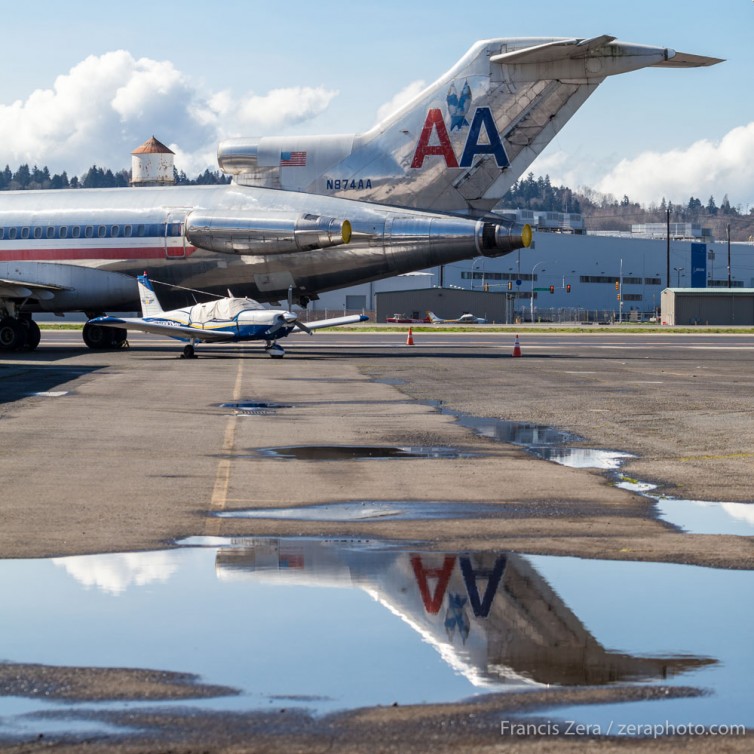
The former American Airlines B727-223, N874AA, at Boeing Field in Seattle, now owned by the National Airline History Museum, Kansas City, Mo.
In early 2015, in preparation for the construction of its giant new Aviation Pavilion, Seattle’s Museum of Flight moved its Boeing 727 (formerly American Airlines N874AA) from the parking lot on the west side of East Marginal Way where it had been displayed along with other large aircraft. Instead of being towed to the museum’s air park with the other planes, it was towed all the way across King County International Airport (also known as Boeing Field) to a parking stall. Rumors swirled that it was headed for a new home, an unnamed museum in the Midwest.
And there it sat, and sat. And sat.
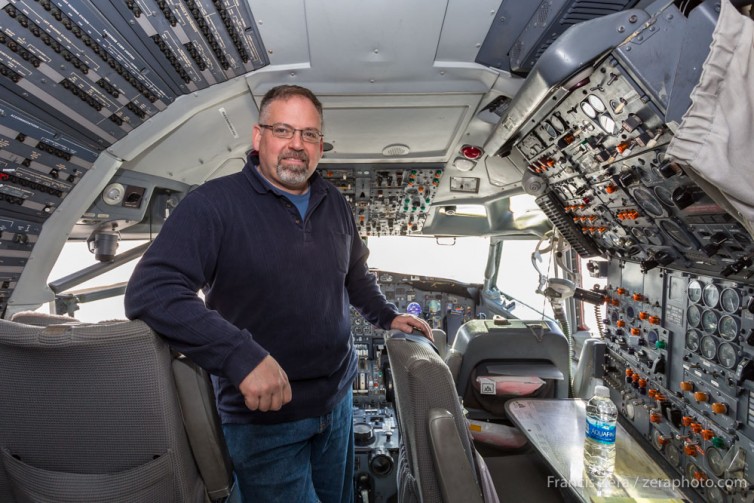
NAHM Executive Director John Roper in the cockpit of the B727 his museum recently acquired from Seattle’s Museum of Flight
On March 3, the mystery was solved when John Roper, the executive director/board member of the National Airline History Museum (NAHM) in Kansas City, Mo., signed the transfer paperwork alongside Museum of Flight CEO Doug King and COO Laurie Haag, officially transferring ownership of the aircraft to the Midwestern museum.
The elderly 727 now has a dedicated Facebook page, and, as of this week, the electrical systems were in the process of being activated and checked in preparation for the aircraft being flown to its new home. Roper said that, as long as the engines are sound, his goal is to get the plane to its new home in Kansas City by May 1.







